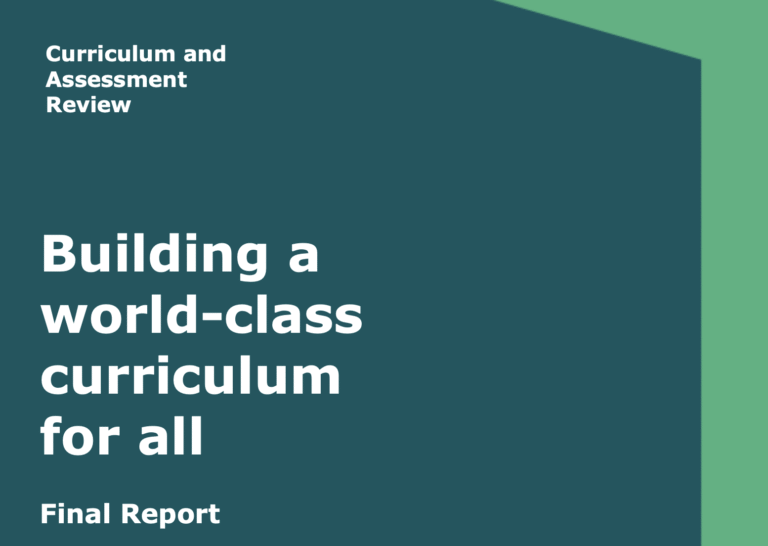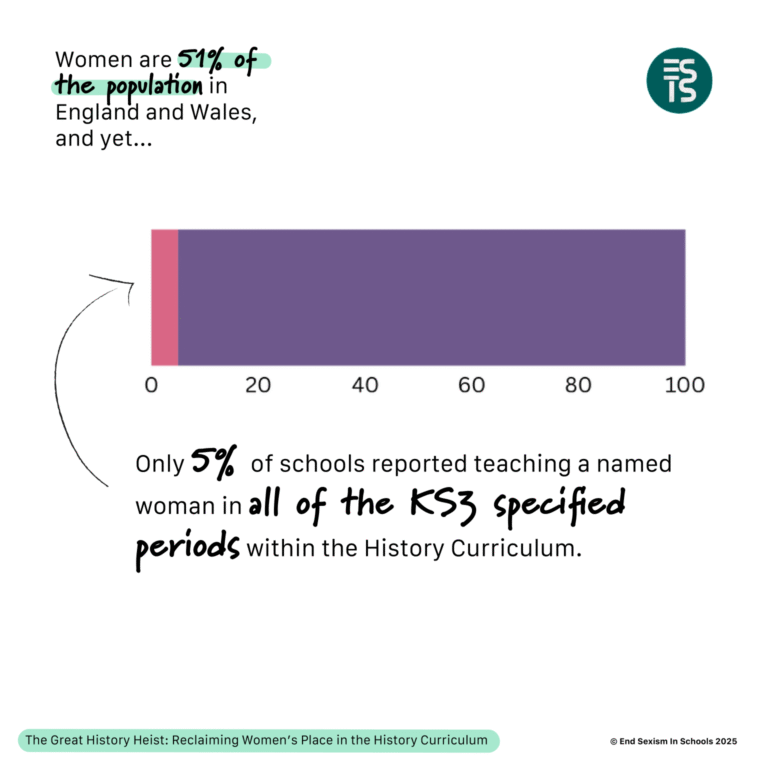TMW’s own Ms Brock reflects on the first year of teaching her KS3 module at North London Collegiate School.
A key part of the Teaching Medieval Women Project’s first year of work has involved NLCS implementing a scheme of work which includes the case studies, ideas and resources that we have all been working on together as a group. We believe that NLCS is a pioneer in the UK; the first school to have a whole term dedicated to the teaching of global medieval women in their own right rather than as an add-on to the more traditional kingship models of previous Key Stage Three teaching.

At NLCS, we have spent several years reflecting on our approach to the teaching of Key Stage Three. Initially, we tweaked our existing schemes of work, however last year we decided that a full overhaul was needed to ensure that the curriculum reflected a more academically rigorous, diverse and frankly engaging understanding of the past. My specific focus has been on our provision of Medieval History within the curriculum. NLCS is an independent girls’ day school and as such we are not bound by the National Curriculum, this is important context for the scheme that I will outline below.

Image source: Wikimedia
When I first started teaching, I was unsurprised but frustrated that my favourite period of History, the Middle Ages, was almost non-existent on the curriculum. Like most schools, NLCS taught some Medieval History in Year 7, but no reference was made to it in lesson time other than in Year 7. As a new teacher, I was keen to change this, and I was exceptionally lucky that my Head of Department was very open to my desire to incorporate more Medieval History into the curriculum so we started to play around a little with our schemes of work. In my third year I added in a new section focused on Eleanor of Aquitaine and the power of medieval queens to our otherwise very traditional Year 7 course on England from 1066 onwards. It was a great addition and the students responded enthusiastically to the wealth of source material and historiography that we studied.
I do not wish students to come away with the erroneous impression that the Middle Ages was a bastion of feminist thinking, but I want them to know that women were there, were important and could challenge the misogyny of their times in impressive and effective ways.
This small addition only served to whet my appetite further, while at the same time I was encountering a large number of negative comments about the Middle Ages from older students. Many of these were applying to study History at university, and were extremely engaged, conscious students but they told me that they found Medieval History ‘boring’ or ‘irrelevant’. This attitude was not new or unique to NLCS; universities across the country have been struggling to recruit History students and are becoming increasingly risk averse in terms of the range of content and optionality they offer, playing it safe by offering more familiar, modern topics. As a result there are ongoing risks to the accessibility of medieval history in higher education. Yet this dismissal of 1000 years of history as irrelevant by our usually extremely engaged students was not my only concern. When I spoke to students about the roles of women in History, I came across some alarmingly old-fashioned views of the past, very much at odds with the politically active, highly erudite students that I taught in a school with a proud history of championing women in education. Sixth formers would tell me that before the 20th century, women had no power and played no role in high politics at all. This was at odds with my own understanding of the Middle Ages and also made me feel very sad that the students did not know about the amazing examples of female agency in the past. Please do not mistake my meaning, I do not wish students to come away with the erroneous impression that the Middle Ages was a bastion of feminist thinking, but I want them to know that women were there, were important and could challenge the misogyny of their times in impressive and effective ways. Finally, I want them to recognise that powerful women were not ‘unique’ or ‘remarkable’ or ‘unusual’ due to the sheer numbers of powerful women that existed in any given time period.

This growing frustration led to a chance discussion with Jonathan Phillips after a conference on the Crusades at NLCS. Then a teacher-focused CPD day on the Crusades held at Royal Holloway in 2022 focused strongly on key issues of women’s representation and the Islamic world, and a core group of teachers and academics was set up (Zara Adaci, myself, Natasha Hodgson and Jonathan Phillips, soon to be joined by Ellie Woodacre, Sam Jones and Jake Unwin). We were united in our desire to do something more about the misconceptions and lack of interest in medieval history, and to highlight female figures and global experiences to reflect the interests of today’s students. The standard school-teaching of medieval history has, frankly, remained unchanged for too long and still conforms to a Whiggish narrative of political power that is at odds with the dynamism, creativity and global outreach of the Middle Ages reflected in modern academic research.
The standard school-teaching of medieval history has, frankly, remained unchanged for too long and still conforms to a Whiggish narrative of political power that is at odds with the dynamism, creativity and global outreach of the Middle Ages reflected in modern academic research.
So what did we decide to do at NLCS? Just over a year ago, my Head of Department and I set about totally redoing the KS3 curriculum in what we believe is a pioneering set of topics and approach to the teaching of KS3. In one meeting we threw out a radical suggestion; medieval history is complex and if we only teach it in one year of KS3 there is only so much we can explore. Why didn’t we teach medieval, early modern and modern history each year, rather than putting medieval history in Year 7, early modern in Year 8 etc? I am very lucky that my department were happy to trial this approach. So that is exactly what we have done. Each year, we study a theme – politics (Year 7), religion (Year 8), and conflict and empire (Year 9). Then, each term we look at a different topic from a different period of History; for example in Year 8 we will study the Golden Age of Islam and the Crusades in Autumn Term, Mughal India in Spring Term and Northern Ireland and the Troubles in the Summer Term. Autumn Term of Year 7 is our Global Medieval Women unit with the enquiry question ‘Were women powerful in the Global Middle Ages?’ We are the first school in the country (we think) to adopt this whole unit scheme of work with our students. This full topic set across the whole Autumn Term gives us the space to address this topic fully, rather than the rather tokenistic, often single case-study approach to teaching women in the classroom.

One of the problems that we felt needed to be addressed very overtly with this new structure was chronology. To counter this, at the start of each term, we discuss chronology with our classes and return to a visual depiction of the vast range of human history, pinpointing which period of history our unit for that term will focus on. As a result, we are able to proactively address the issue of chronology and keep drawing our students’ attention back to change over time. Another foundational and important lesson for Year 7 on the Global Women course is when we discuss and focus on different definitions of power and authority, a theme which is re-addressed throughout the unit. Here, we hope to inspire our students to think not just about political power in a traditional sense, but also cultural power, religious power and of course, more subtle power such as influence over others.
Here, we hope to inspire our students to think not just about political power in a traditional sense, but also cultural power, religious power and of course, more subtle power such as influence over others.
We then move on to our case studies. At NLCS, it was really important that we adopted a global approach for the study of women not least because our students have asked for this, but also because we wanted to explore the truly global nature of women’s experiences in human societies contemporary to the medieval west. The case studies that we chose for this year were: Empress Matilda, Queen Melisende of Jerusalem, Shajar al-Durr, the Khitan Empresses and Joan of Arc. We chose these women for their geographical range but also for their ability to cover different types of power – political, economic, artistic and military.

So how has the first year gone? There are most certainly key takeaways and changes that we need to make, however it has been a wonderful first year of teaching with Year 7. The real strengths of this approach have been that we have really embraced teaching medieval women and power with nuance and dedication; gone are the days of the ‘women in the middle ages’ half a page of a textbook! We have also been able to explore a diversity of cultures, dedicating equal time to our case studies from across the globe. However, there are, of course, challenges such as the order in which to teach the case studies; for example, do we teach them entirely chronologically or do we adopt a geographical approach, starting in the UK/France as it may be contextually more familiar to our students? At times it has also proved challenging to find enough information about the context of the different societies and regions that we are studying to satisfy our curious Year 7 students! Nonetheless, these are all problems that the Teaching Medieval Women group has helped us to address and is continuing to help us to address; the value of having academics who know so much about medieval women means that I can ask them for ideas for new examples to fit a scheme of work, contemporary resources, knowledge building resources, historians’ interpretations, background reading and advice and they are always willing to help.
I thought I would end with some reflections from my Year 7 class on this unit of work which really stuck with me and shows that we are doing something very good here:
‘I enjoyed learning about women that were powerful as the topic is not taught a lot’
Student A
and
‘My favourite women were the Khitan Empresses because of what they achieved in their lifetime. I loved learning about what women achieved’.
Student B
Vicky Brock, North London Collegiate School
Vicky is currently the Second in the History and Politics Department at North London Collegiate School, an independent girls’ day school, where she has taught for the last seven years.



